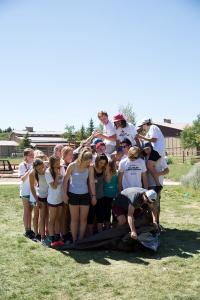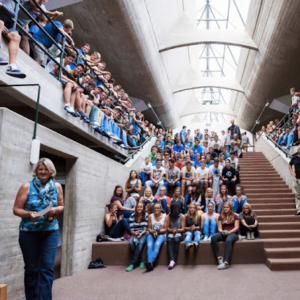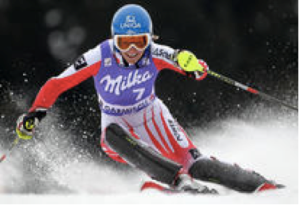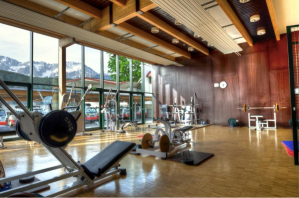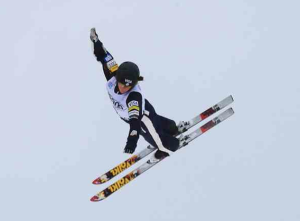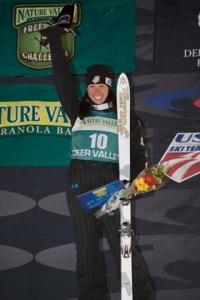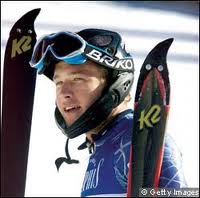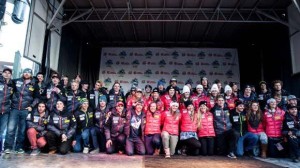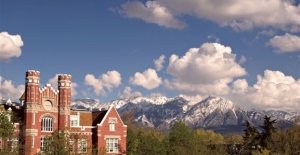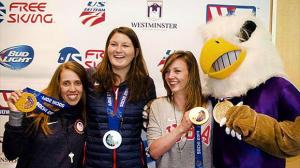When I first gathered with the new members of US Ski and Snowboard Teams, I opened with: “Don’t Get Happy.” Their success on the junior level and on the national level have put them on a USSA national team, but as I told them, “If this were halftime of a soccer game, the score would be 0-0.” We brought some great athletes together last week for our “Rookie Camp” to begin their journey as international athletes, but I thought it important to emphasize how much more growth is ahead of them.
The Rookie Camp has existed for ten years now, and this article is a chance to look under the hood at how we aim to orientate new USSA athletes. The schedule had four main parts: athletics, health and safety, team building and the importance of making a professional athlete development plans.
USSA CEO Tiger Shaw opened up the camp, and he highlighted how he worked under a dozen or more coaches during his very successful US Ski Team career. “You need to learn how to work effectively with all the different coaches,” he said, and “in the end, you have to be your own best coach.” Then, the Executive VP of Athletics, Luke Bodensteiner, emphasized that everyone at USSA “is here to support you,” and to become best in the world requires focus and work on all the little details of training and sport. As he spoke these words of wisdom, I could hear @slalomtokyodrift whispering “hundredths matter.”
The most enjoyable moments of Rookie Camp occurred during the introductions to the athletic program. Of course, the athletes loved playing basketball in the gym and jumping on the tramps. Some had their first taste of the strength and conditioning program with fitness testing and workouts. Sport science here at the Center of Excellence is impressive, and the athletes also enjoyed the first tastes of Allen Tran’s knowledge of nutrition, not to mention his endless healthy snacks in the kitchen area. Kyle Wilkens introduced the medical, sports psychology and wellness programs based out of the Center of Excellence. Finally, the athletes ate one lunch with their sport directors and team managers to meet their support team and to better understand the opportunities and responsibilities of the athletic program.
A key part of the program was to encourage and guide the athletes to make their own professional athlete development plan. As rookies, many of them are looking ahead to careers of ten years or more. The camp began the process of creating an education and career track. On the school front, a dozen of the athletes still need to finish high school and we push all of our older athletes to take one to three college courses per year. Preliminary research has shown that athletes who continue part-time education move up the A-B-C-D team pipeline more often than the athletes who don’t continue their schooling.
On the career front, we had programs on financial management, media skills, personal branding, networking and fundraising. We teach the athletes to consider themselves a small business; and successful businesses have clear business plans. The mock interviews with Tom Kelly and the crew from Communications brought out a lot of questions and a lot of laughs.
As in any orientation, we had programs around health and wellness. USADA gave an informative and entertaining presentation on the current anti-doping policies. (Ask the athletes about the mock testing slides!) Finally, they heard presentations on SafeSport and substance abuse.
In addition to all the information, the rookies engaged in some team-building exercises on the ropes course at the National Ability Center and in an avalanche training session. The best moment, however, might have been the impromptu “team-building exercise” that emerged unplanned at the Peaks Hotel when different groups worked on their “tidal wave building skills” in the hotel swimming pool one night after dinner.
The dinners were a hit. We had one formal dinner at the Goldener Hirsch where a trustee and the Military Mentorship folks explained some of the basics of fancy fundraising functions. The Friday night BBQ with USSA staff outside of Tiger’s office brought Olympic champion Hannah Kearney on deck to talk about: the importance of taking care of the small and important decisions, using routines to achieve goals, and treasuring teammates. Hannah was awesome!
At the end, Tiger also talked about how “no matter how well they do, athletes are never happy; and that feeling is what pushes them to be better and better.” Don’t Get Happy was an ironic theme for Rookie Camp; but it was nice to see that the athlete did have some happy moments, too. These smile shone brightly after our last lunch on Saturday when most of the athletes lingered with each other well after the last official program. It was nice to see that all these athletes from very different sports did not want to leave each other. Friendships have been kindled, and we hope they stick around for a long time!
*I first heard the term “Don’t Get Happy” from Norm Walker, the legendary high school football coach.


